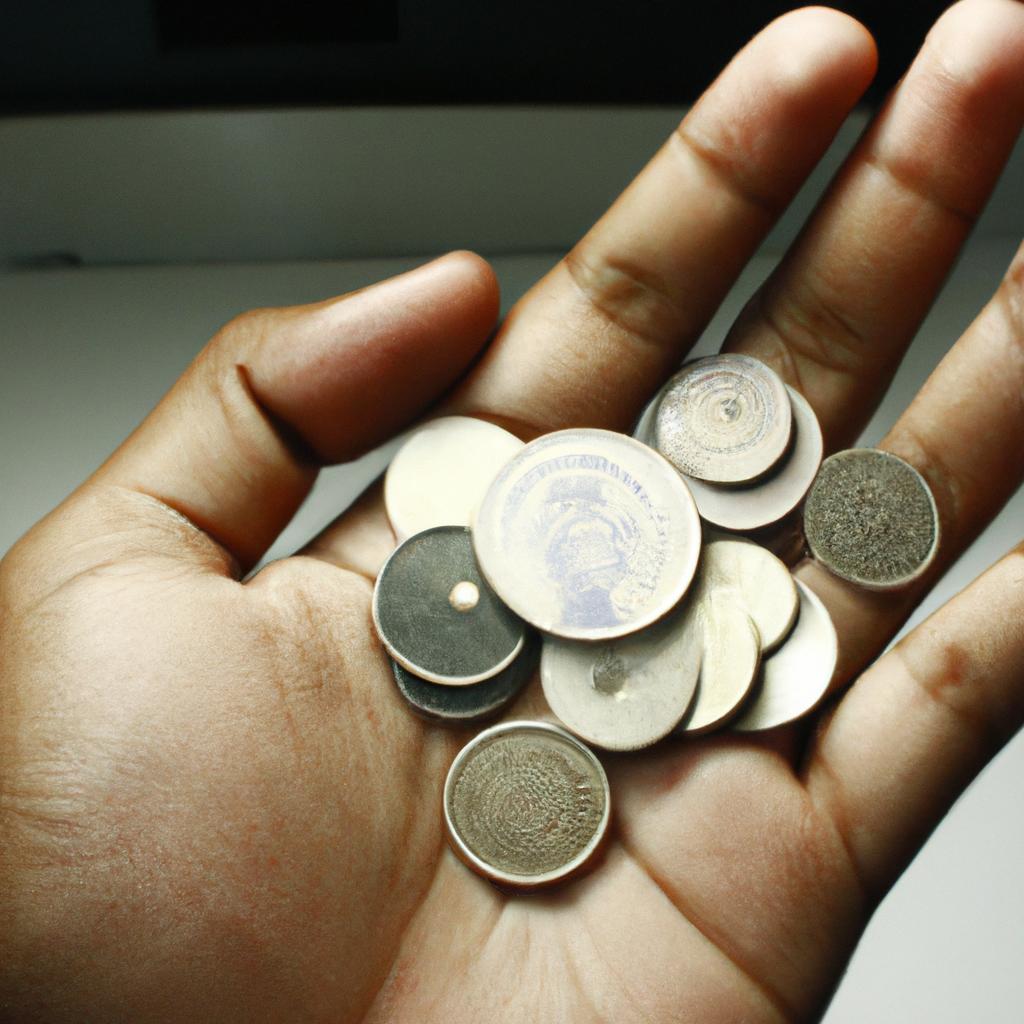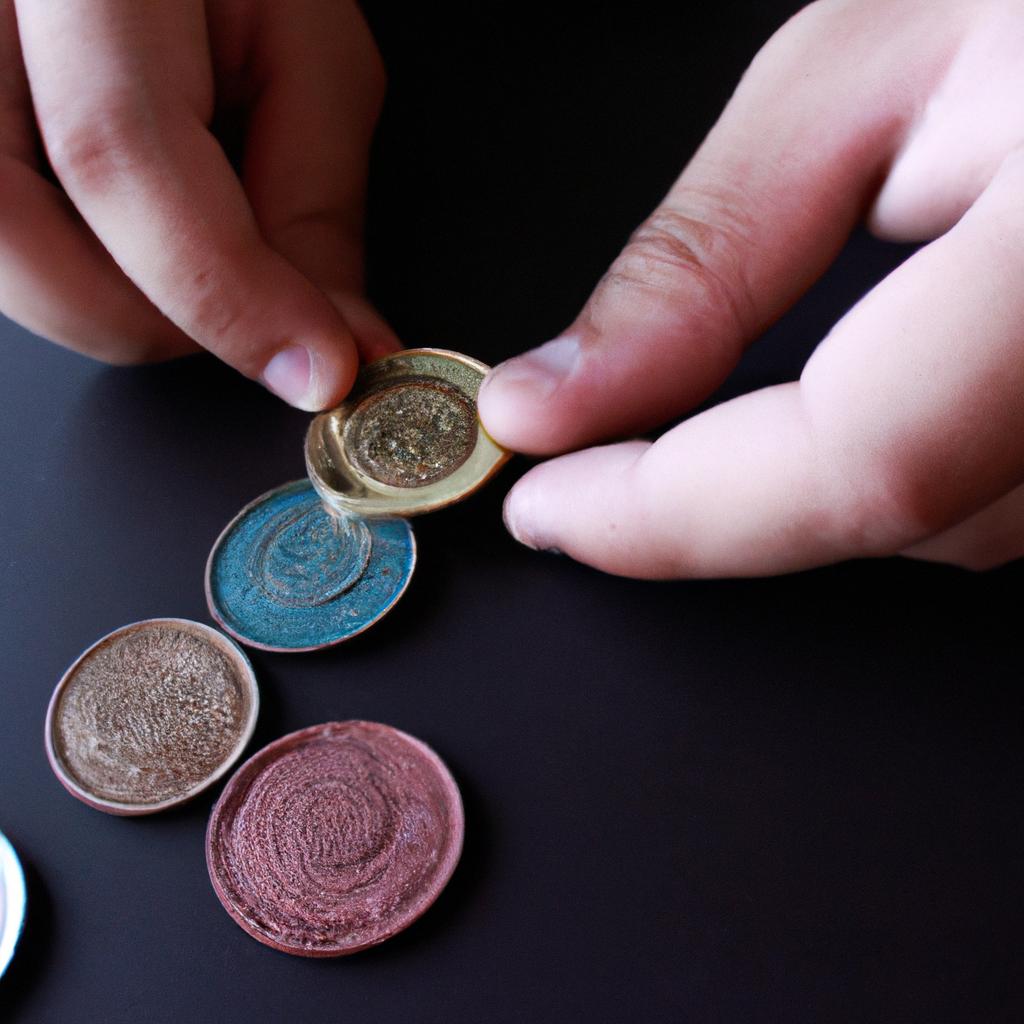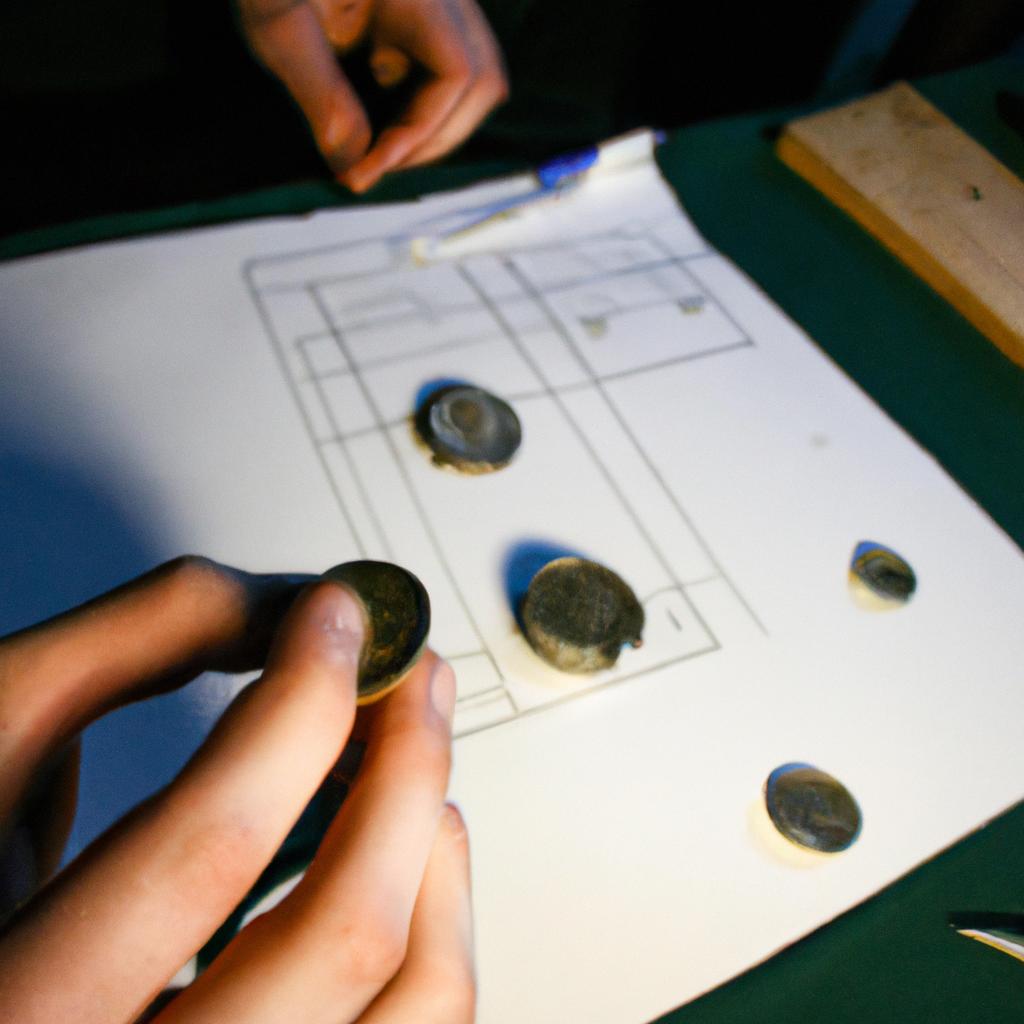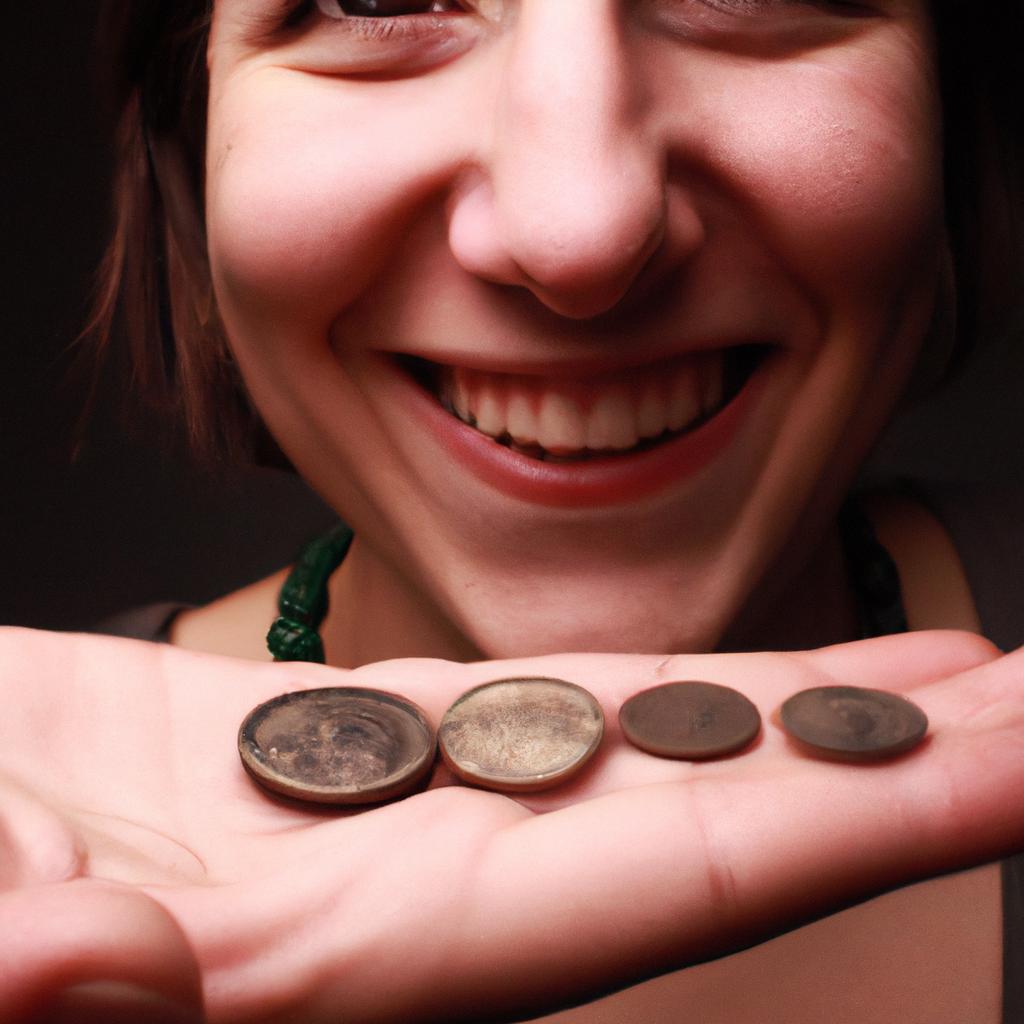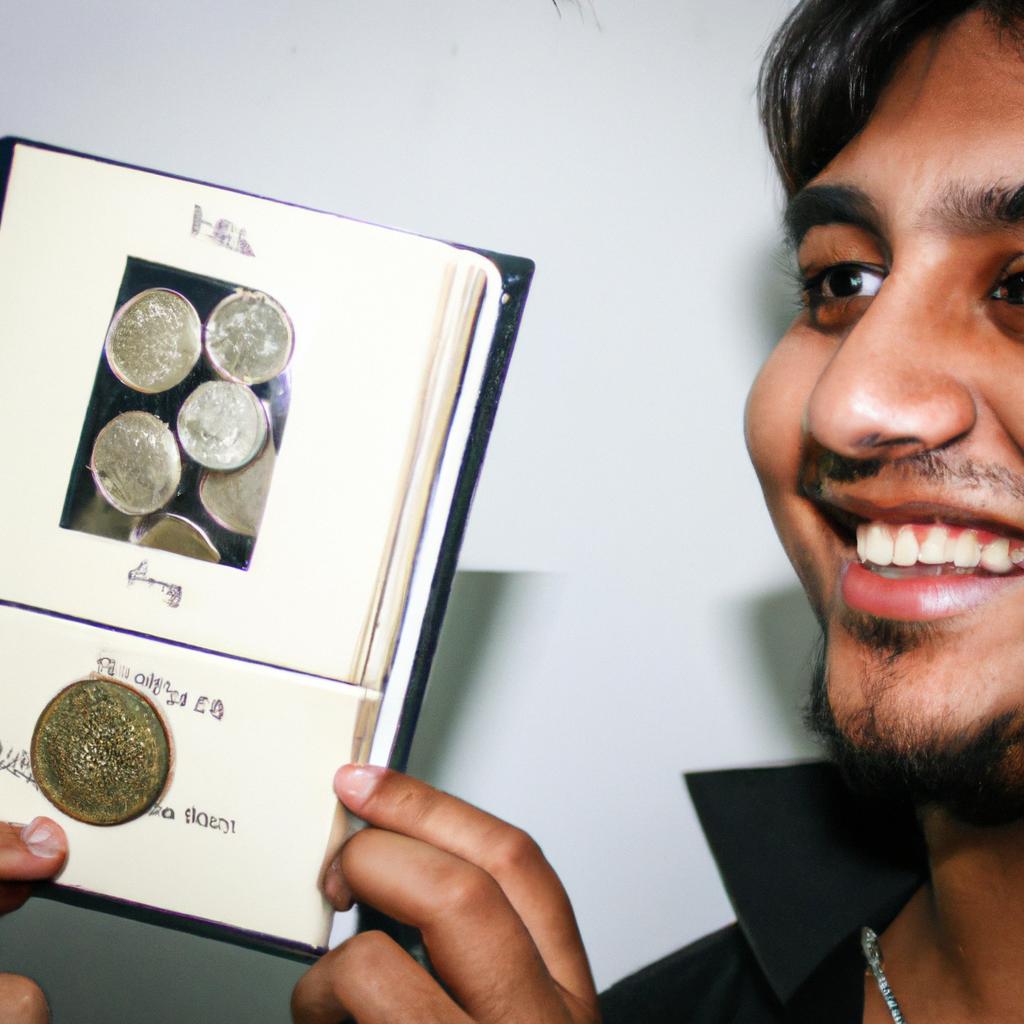Coin Preservation in Antiques and Collectibles: A Guide for Coin Collectors
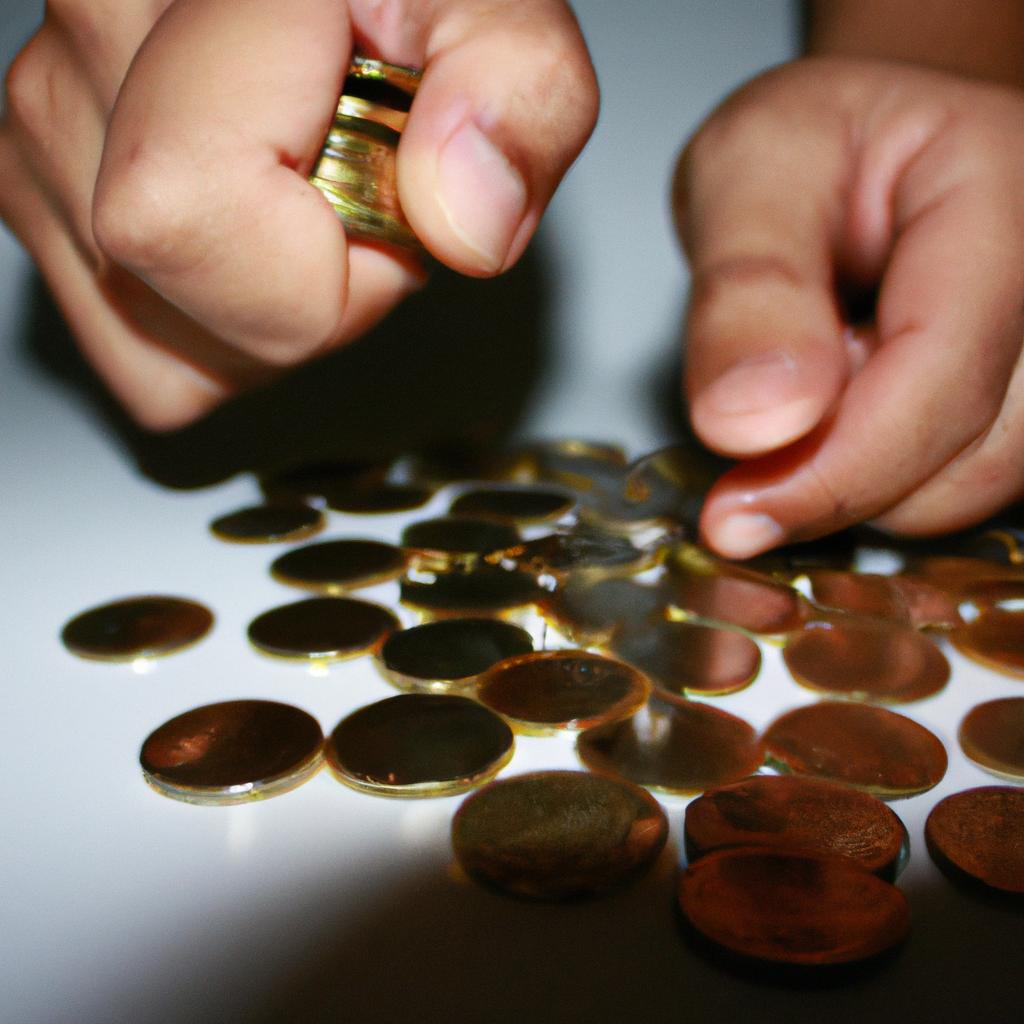
Coin preservation is a critical aspect of maintaining the value and integrity of antiques and collectibles for coin collectors. Proper preservation techniques not only protect coins from physical damage but also help to prevent deterioration caused by environmental factors such as humidity, temperature fluctuations, and exposure to air pollutants. For instance, consider the case of an avid numismatist who recently acquired a rare silver coin dating back to the 18th century. Without proper preservation methods in place, this historical artifact could quickly succumb to corrosion or wear, significantly diminishing its value.
In order to ensure the longevity and condition of valuable coins, it is essential for collectors to follow comprehensive guidelines on effective coin preservation strategies. This article aims to provide a guide for coin collectors on best practices for preserving their treasured pieces. By adhering to these principles, collectors can safeguard their investments while allowing future generations to appreciate the beauty and historical significance that coins possess. Moreover, understanding proper coin preservation techniques empowers individuals with knowledge necessary for making informed decisions when acquiring new additions for their collections or when handling and displaying their existing coins.
-
Handle Coins with Care: When handling coins, it is important to minimize direct contact with your hands. The natural oils and acids on your skin can cause damage to the coin’s surface over time. To prevent this, always use gloves or hold the coin by its edges when necessary.
-
Clean Coins Properly: Cleaning coins should be done sparingly and only when necessary. Improper cleaning techniques can potentially harm the coin’s surface and reduce its value. If you feel the need to clean a coin, use mild soap, warm water, and a soft cloth or brush specifically designed for numismatic purposes. Avoid harsh chemicals or abrasive materials that can scratch or tarnish the coin.
-
Store Coins in Protective Holders: Coin holders are an essential tool for preserving coins’ condition while allowing easy viewing and handling. There are various types of holders available, including coin flips, capsules, folders, albums, and certified grading holders (slabs). Choose a holder appropriate for your specific needs based on factors like material composition, size compatibility, and level of protection required.
-
Control Environmental Factors: Coins are sensitive to fluctuations in temperature and humidity levels as well as exposure to air pollutants such as sulfur compounds. It is advisable to store coins in a cool, dry place with stable conditions. Avoid storing them in basements or attics where extreme temperature changes may occur. Additionally, keep coins away from direct sunlight as prolonged exposure can cause discoloration.
-
Use Anti-Tarnish Products: Tarnishing is a common issue for silver and copper coins due to oxidation processes. To prevent tarnish formation or slow down its progression, consider using anti-tarnish products like anti-tarnish strips or silica gel packets in storage containers or display cases.
-
Regularly Inspect Your Collection: Periodically inspect your coin collection to identify any signs of deterioration or damage. Look out for discoloration, corrosion, spotting, or any changes in the coin’s surface. If you notice any issues, consult with a professional numismatist or conservator for appropriate advice.
Remember that each coin is unique and may require specific preservation techniques based on its age, composition, and condition. It is always recommended to seek expert guidance when dealing with valuable or delicate coins to ensure their longevity and value retention.
Choosing the right storage materials
Choosing the Right Storage Materials
When it comes to preserving coins in antiques and collectibles, selecting the appropriate storage materials is crucial. By choosing the right materials, collectors can ensure that their valuable coins remain protected from various damaging factors such as moisture, dust, and other environmental elements.
To illustrate this point, let’s consider a hypothetical situation. Imagine a passionate coin collector who has spent years acquiring rare and precious coins. However, due to improper storage techniques, these valuable pieces have become tarnished and corroded over time. This unfortunate scenario could have been avoided if proper storage materials were utilized.
To prevent such incidents from occurring, collectors should be aware of the following key considerations when selecting storage materials:
-
Acid-free envelopes or holders: These are designed specifically for storing coins without causing any chemical reactions that may harm them. The acid-free property ensures that there will be no deterioration or discoloration of the coins due to exposure to harmful substances.
-
Anti-tarnish strips or capsules: Incorporating anti-tarnish technology helps protect coins from oxidization caused by airborne pollutants. These strips or capsules absorb harmful gases and keep the environment within the storage container free from corrosive agents.
-
Coin albums or pages: Utilizing specially designed albums or pages with individual pockets provides an organized way to store and display collections while minimizing physical contact between coins. This reduces the risk of scratches or abrasions during handling.
-
PVC-free plastics: Avoiding polyvinyl chloride (PVC) materials is essential as they contain chemicals that can react with metal surfaces over time, leading to irreversible damage on coins’ finishes.
By implementing these suggestions regarding storage materials, coin collectors can safeguard their prized possessions effectively against potential risks associated with poor preservation methods.
In considering which specific items would best meet your needs for preserving coins in antiques and collectibles, refer to Table 1 below:
| Material Type | Advantages | Disadvantages |
|---|---|---|
| Acid-Free | Prevents deterioration and discoloration | Can be more expensive than regular storage materials |
| Envelopes | ||
| Anti-Tarnish | Protects against oxidation | May require periodic replacement |
| Strips/Capsules | ||
| Coin Albums/ | Organizes collections while minimizing contact between coins | Bulky, requires additional storage space |
| Pages |
Table 1: Advantages and disadvantages of different storage materials for coin preservation.
In conclusion, selecting appropriate storage materials is essential in ensuring the longevity and preservation of valuable coins. By employing acid-free envelopes or holders, anti-tarnish strips or capsules, coin albums or pages, as well as PVC-free plastics, collectors can protect their coins from deterioration caused by environmental factors.
Handling coins with care
Having discussed the importance of choosing the right storage materials for preserving your coin collection, it is now crucial to understand how to handle these precious artifacts with care. Mishandling coins can lead to irreversible damage and diminish their historical and monetary value. To ensure that your coins remain in pristine condition, follow these essential guidelines.
Paragraph 1:
Consider a hypothetical scenario where a collector named John accidentally dropped his rare gold coin while examining it. Due to improper handling, the coin suffered scratches and dings, significantly reducing its appeal and market value. This unfortunate incident emphasizes the significance of proper handling techniques when dealing with delicate collectible coins.
To handle your coins without causing any harm or wear, keep the following points in mind:
- Always wash your hands thoroughly before touching coins to remove oils and dirt.
- Use cotton gloves or finger cots when handling valuable or fragile coins.
- Hold them by their edges or use soft padded tweezers if necessary.
- Avoid placing pressure on specific areas of the coin, as this can cause bending or deformation.
These precautions will help preserve the integrity of your collection and prevent potential damage caused by mishandling.
Paragraph 2:
In addition to proper handling techniques, understanding common mistakes to avoid is equally important. The table below highlights some commonly encountered errors that collectors should steer clear from:
| Common Mistakes | Consequences |
|---|---|
| Cleaning coins with abrasive materials | Scratches and loss of patina |
| Using harsh chemicals for cleaning | Chemical reactions leading to corrosion |
| Storing coins in PVC holders | Plasticizers leaching onto surfaces |
| Exposing coins to extreme temperature fluctuations | Toning, oxidation, and environmental damage |
Avoiding these pitfalls will safeguard the longevity and aesthetic qualities of your cherished numismatic treasures.
Paragraph 3:
By implementing careful handling procedures and avoiding common mistakes, you demonstrate a commitment to preserving both the artistry and historic value of your coin collection.
Now let’s explore effective strategies to avoid damaging your coins while attempting to clean them.
Avoiding common cleaning mistakes
Handling coins with care is crucial for preserving their condition and value. In the previous section, we discussed various techniques to handle coins safely. Now, let’s explore common cleaning mistakes that collectors should avoid in order to maintain the authenticity and integrity of their coin collections.
Imagine the scenario where a novice collector recently acquired an ancient Roman coin from an auction. Excited about its potential beauty, they decide to clean it thoroughly using abrasive materials and chemical solutions without proper knowledge or guidance. Unfortunately, this well-intentioned but misguided attempt results in irreparable damage to the historical artifact.
To prevent such unfortunate incidents, here are some key points to keep in mind when it comes to cleaning your treasured coins:
- Avoid harsh chemicals: Chemicals such as bleach or acids can cause corrosion and discoloration on delicate metal surfaces. Stick to mild soap solutions or specialized coin-cleaning products designed specifically for numismatic purposes.
- Never scrub aggressively: Overzealous scrubbing can lead to scratches or loss of surface details on coins. Instead, gently wipe them with soft brushes or cotton gloves while being cautious not to apply excessive pressure.
- Do not use ultrasonic cleaners: Although commonly used for cleaning jewelry, ultrasonic cleaners can be harmful to coins due to the vibrations created during the process. These vibrations may cause structural damage or loosen any adhering patina.
- Avoid dipping methods: Dipping involves immersing coins into a liquid solution, often containing harsh chemicals like acetone or silver dip. This method is highly discouraged as it can strip away natural toning and potentially alter the original state of the coin.
To further emphasize these points visually, refer to the table below highlighting the detrimental effects of improper cleaning techniques:
| Cleaning Method | Potential Damage |
|---|---|
| Harsh Chemicals | Corrosion and discoloration |
| Aggressive Scrubbing | Surface scratches and loss of detail |
| Ultrasonic Cleaners | Structural damage, loosening patina |
| Dipping Methods | Stripping natural toning, altering original state |
Understanding the importance of avoiding these common cleaning mistakes is essential for preserving your coin collection’s historical significance and monetary value. Now that we have covered proper handling techniques as well as potential pitfalls to avoid during cleaning, let us delve into understanding the impact of environmental factors on coins’ long-term preservation.
Understanding the impact of environmental factors
Now, let us delve into understanding the impact that environmental factors can have on the longevity and condition of your precious coin collection.
Imagine a scenario where a dedicated coin collector proudly displays their cherished collection in an exquisite wooden cabinet near a large window. Over time, they begin to notice subtle changes in the appearance of some coins. This example highlights how environmental factors can significantly affect the preservation of coins.
To protect your valuable coins from such deterioration, it is crucial to be aware of these influential elements:
-
Humidity levels: Excessive humidity can cause metal corrosion and damage to delicate surfaces. Conversely, extremely low humidity can lead to brittleness or cracking. Maintaining optimal humidity levels between 40% to 60% helps prevent unwanted moisture-related issues.
-
Temperature fluctuations: Extreme temperature variations may accelerate chemical reactions within coins and contribute to discoloration or oxidation. Storing coins in stable environments with temperatures around 68°F (20°C) reduces the risk of such adverse effects.
-
Light exposure: Prolonged exposure to direct sunlight or artificial lighting containing ultraviolet (UV) rays can fade colors and degrade sensitive materials over time. Shielding your collection from excessive light by using UV-resistant display cases or storing them in darkened areas preserves their original aesthetic appeal.
-
Air quality: Poor air quality characterized by pollutants, gases, or acids present in unfiltered environments can tarnish and corrode coins rapidly. Employing acid-free storage solutions and ensuring proper ventilation minimizes potential harm caused by airborne contaminants.
Consider this table showcasing various environmental factors and their possible consequences:
| Environmental Factor | Consequence |
|---|---|
| High humidity | Metal corrosion; surface damage |
| Low humidity | Brittleness; cracking |
| Exposure to light | Fading of colors; material degradation |
| Poor air quality | Tarnishing; accelerated deterioration |
By understanding and addressing these environmental factors, you can safeguard your coin collection for generations to come. In the subsequent section, we will explore how to identify signs of deterioration in coins, allowing for timely intervention and preservation.
With a solid understanding of the impact that environmental factors can have on coin preservation, let us now shift our focus towards identifying signs of deterioration within your precious collection.
Identifying signs of deterioration
Understanding the impact of environmental factors on coin preservation is crucial for collectors who wish to maintain the integrity and value of their antique and collectible coins. By recognizing these factors, one can take appropriate measures to safeguard against deterioration. For instance, let’s consider a hypothetical case study involving a rare gold coin that was exposed to high humidity levels due to improper storage. This resulted in corrosion and tarnishing, significantly reducing its aesthetic appeal and numismatic value.
To prevent such unfortunate outcomes, it is important to be aware of the key environmental factors that can negatively affect coins:
- Humidity: Excessive moisture in the air can lead to oxidation and corrosion of metal coins over time.
- Temperature: Extreme heat or cold can accelerate chemical reactions within coins and cause physical damage.
- Light exposure: Prolonged exposure to ultraviolet (UV) light from sunlight or artificial sources may fade colors or create discoloration on certain types of coins.
- Air quality: High levels of pollutants like sulfur dioxide in the atmosphere can react with metal surfaces, causing tarnish and degradation.
To further illustrate the impact of these factors on coin preservation, we present a table showcasing different scenarios:
| Environmental Factor | Impact |
|---|---|
| High humidity | Corrosion and tarnishing |
| Extreme temperatures | Chemical reactions leading to physical damage |
| Light exposure | Fading colors or discoloration |
| Poor air quality | Tarnish and degradation |
By understanding how these factors influence coin preservation, collectors can implement preventive measures such as using desiccants or dehumidifiers, storing coins in temperature-controlled environments, limiting direct light exposure through protective display cases or UV-blocking materials, and ensuring proper ventilation where coins are stored.
In view of this discussion on environmental factors affecting coin preservation, maintaining awareness about signs of deterioration becomes essential. The next section will delve into identifying these signs and understanding their implications for collectors. For a comprehensive approach to coin conservation, it is important to seek professional advice from experts in the field who can provide specialized knowledge and guidance tailored to individual collections.
Transitioning into the subsequent section about “Seeking professional advice for conservation,” collectors can benefit greatly from expert assistance when it comes to preserving their valuable coins.
Seeking professional advice for conservation
Section H2: Seeking Professional Advice for Conservation
Transitioning from the previous section on identifying signs of deterioration, it is crucial for coin collectors to seek professional advice when it comes to preserving their valuable antiques and collectibles. While some minor preservation techniques can be undertaken by enthusiasts themselves, more complex conservation efforts should always be left in the hands of experts who possess specialized knowledge and skills in the field.
To illustrate this point, let us consider a hypothetical case study. Imagine a collector who discovers an ancient Roman coin that has been severely damaged due to exposure to harsh environmental conditions. The collector recognizes the importance of seeking professional assistance as they understand that attempting amateur restoration methods may further degrade the artifact’s value or historical significance. By consulting with a reputable conservator experienced in numismatic conservation, the collector ensures proper treatment that will not only preserve but also enhance the quality and integrity of the coin.
When considering professional advice for conserving coins, there are several reasons why engaging experts is essential:
- Expertise: Professionals trained in numismatic conservation possess extensive knowledge about different types of coins, their historical context, and specific preservation requirements.
- Techniques: Conservators have access to advanced equipment and employ proven techniques specifically designed for cleaning, stabilizing, and repairing coins.
- Materials: They use specialized materials and tools necessary for delicate interventions without causing any damage.
- Ethical considerations: Professionals adhere to ethical guidelines established by organizations such as the American Institute for Conservation (AIC) to ensure responsible handling and preservation practices.
Table example:
| Reasons Why Professional Advice is Essential |
|---|
| Experts have specialized knowledge |
| Advanced techniques are employed |
| Specialized materials are used |
| Adherence to ethical guidelines |
Seeking professional advice when dealing with deteriorated or historically significant coins allows collectors to benefit from expert insights while safeguarding the long-term value and cultural heritage embodied within these artifacts. It is important to remember that each coin is unique, and proper conservation requires an individualized approach. By engaging the expertise of conservators, collectors can ensure that their coins are preserved for future generations to appreciate and enjoy.

